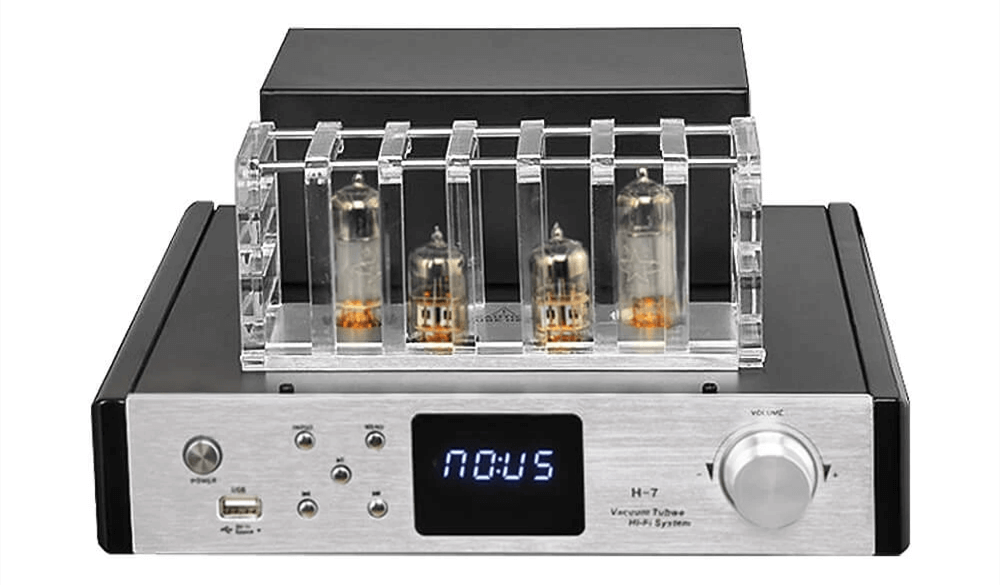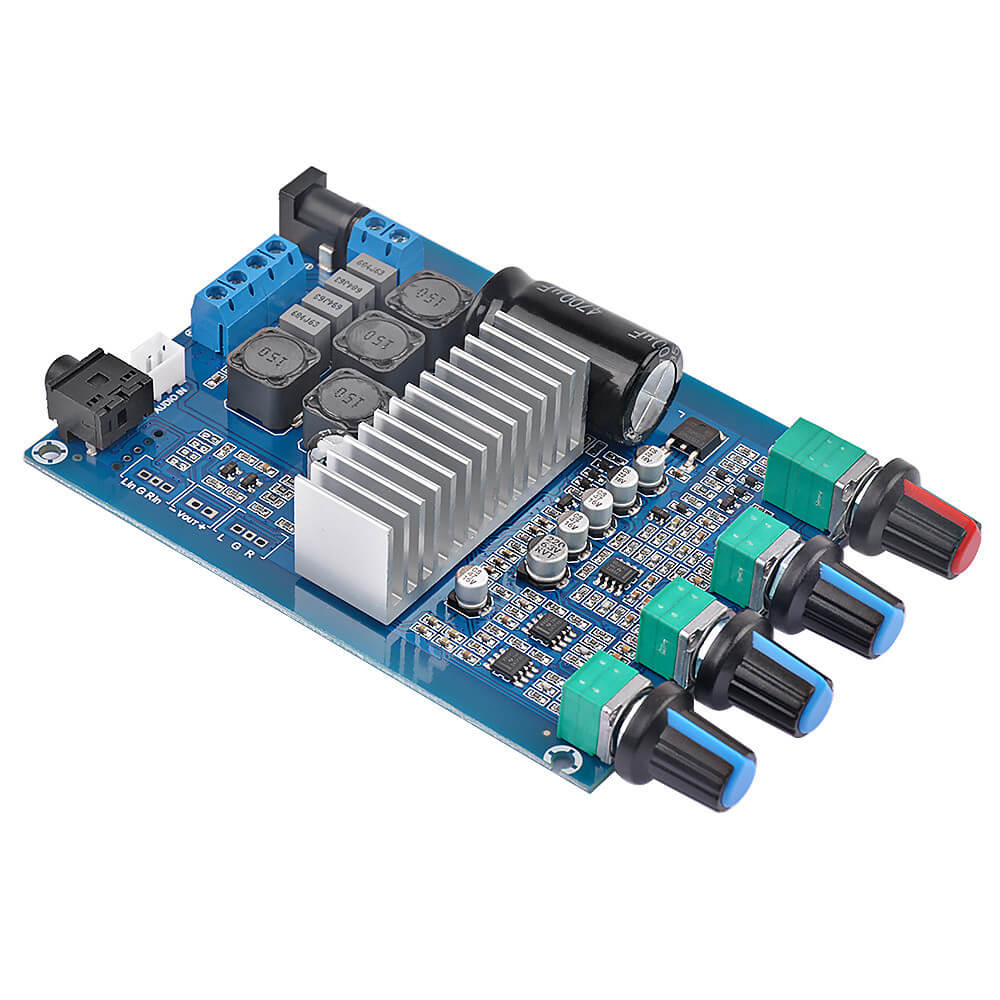What is an amplifier?
Power amplifier, short for power amplifier, is the most basic equipment in the audio system. It amplifies the weak signal from the sound source or pre-amplifier, and promotes the speaker to prevent sound. It is a good set of audio system power amplifier.
The role of the amplifier:
Its function is mainly to amplify the weak signal input from the audio source equipment, and generate enough current to push the speaker to reproduce the sound. Due to the consideration of power, impedance, distortion, dynamics, and different ranges of use and control and adjustment functions, different power amplifiers also have different signal processing, circuit design, and production processes.
Amplifier classes:
There are three major classification methods for power amplifier classification: conductive methods, functions and uses.
Different conductive methods come to classify: Amplifiers can be divided into Class A amplifiers, Class B amplifiers, Class AB amplifiers, and Class D amplifiers.
Class A amplifier:
Two or two sets of output tubes in the Class A power amplifier output stage are always in a conductive state, and they maintain a conducting current state with or without signal input. This power amplifier has the best linearity, and each output tube amplifies the full wave of the signal, and there is basically no distortion. When there is no signal, the output tubes each pass the same current, and there is no unbalanced voltage or current on the output center, so there is no current input to the speaker. When the positive current in the signal area starts to flow unbalanced into the loudspeaker to promote sound.
Class B amplifier:
Class B power amplifier works when no signal is input, the output transistor is non-conductive and does not consume power; when there is a signal input, each pair of output tubes amplifies the general waveform, turns on and off, and works in turn to complete a full-wave amplification process. When the two output tubes work in turn, crossover distortion occurs and becomes non-linear.
Class AB amplifiers:

Class AB power amplifier is a design compatible with the advantages of class A and class B power amplifiers. When there is no signal or the signal is very small, the positive and negative channels of the transistor are always open. At this time, the power is lost, but it is not as serious as the Class A power amplifier. When the signal is positive, the negative channel is always open before the signal becomes strong, but the negative channel is closed when the signal turns strong. When the signal is negative, the work of the positive and negative channels is just the opposite.
Class D amplifier:
Class D amplifiers refer to Class D audio power amplifiers (sometimes called digital amplifiers). By controlling the ON / OFF of the switch unit, the amplifier driving the speaker is called a Class D amplifier. Class D amplifiers were first proposed in 1958 and have become increasingly popular in recent years. It has been available for many years. Compared with the general linear AB power amplifier circuit, the D power amplifier has the characteristics of high efficiency and small size.

According to different functions, you can use pre-amplifier (also called pre-stage), power amplifier (also called post-stage) and combined amplifier.
Power amplifier is short for power amplifier, an electronic device used to enhance the signal power to drive the speaker to make sound. A power amplifier without auxiliary functions such as signal source selection and volume control is called the rear stage.
The pre-amplifier is the pre-amplification and control part before the power amplifier. It is used to enhance the voltage amplitude of the signal, and provides functions such as input signal selection, tone adjustment and volume control. The preamp is also called the preamp.
The amplifiers in which the preamplifier and the power amplifier are installed in the same chassis are called combined amplifiers. The common amplifiers in our home are generally combined.
According to different purposes, it can be divided into AV amplifier and Hi-Fi amplifier
AV amplifiers are amplifiers specifically designed for home theater applications. They generally have more than 4 channels and surround sound decoding, and have a display. The main purpose of this type of amplifier is to truly create the sound effects of the film environment and let the audience experience the theater effect.
Hi-Fi amplifiers are amplifiers designed to reproduce the true colors of music with high fidelity. They are generally two-channel designs and have no display. "HI-FI amplifier" is the amplifier of our enthusiasts, and its output power is generally below 2X150 watts. Designed with "beautiful sound and high fidelity" as its purpose.
According to the type of power amplifier
Transistor amplifier
Transistor amplifier refers to an audio power amplifier with a transistor as an amplifying element. The advantages of transistor power amplifiers are high current, wide frequency band, low frequency control power, analytical power when dealing with large scenes, layering and brightness, etc. are superior to tube power amplifiers, but the treble of the tube machine is smoother, with sufficient air sense, and has a This kind of sound staining that quite a lot of people like. Although the sound details and levels are less, the soft and slightly fuzzy sound is beautiful.
Tube amplifier
Tube amplifier refers to an audio power amplifier that uses a tube as an amplification element. It is the oldest and long-lasting evergreen tree in the audio industry. Its remarkable advantages are sweet and soft sound, natural transparency, especially large dynamic range and good linearity. It is not easily replaced by other devices.
According to the number of components
Single-ended power amplifier
The output stage is completed by one amplifying element (or multiple elements but connected in parallel to a group) to amplify the signal plus and minus two and a half cycles. Single-ended amplifiers can only take Class A working conditions.
Push-pull amplifier
The output stage has two "arms" (two sets of amplification elements). When the current of one "arm" increases, the current of the other "arm" decreases, and the state of the two changes in turn. To the load, it seems that one "arm" is pushing and the other "arm" is pulling together to complete the current output task.
Although class A amplifiers can use push-pull amplification, it is more common to use push-pull amplification to form a class B or class A amplifier.
Focus on Audio






Leave a comment
This site is protected by hCaptcha and the hCaptcha Privacy Policy and Terms of Service apply.